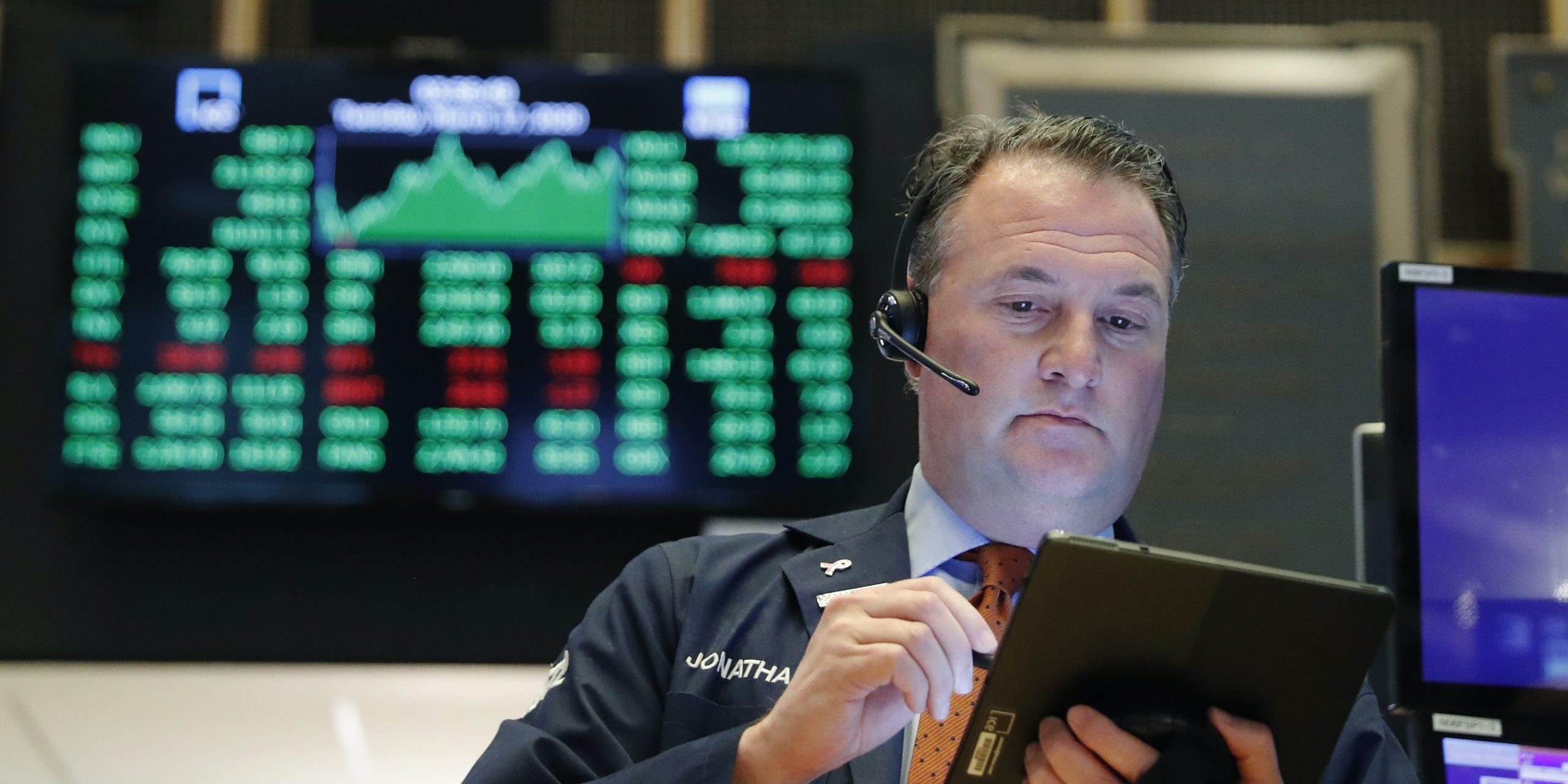- Stocks’ price-earnings ratios remain at historic highs, but their value compared to bonds suggests a market booster could be on the horizon, Marko Kolanovic, head of macro quantitative and derivatives research at JPMorgan, said Wednesday.
- Central banks’ relief programs prompted an exodus from equities and flooded the bond market with investor cash.
- Yet quantitative funds’ trading algorithms are on the verge of triggering a return to the stock market as volatility eases, Kolanovic wrote in a note.
- For such firms to reach their median equity exposure, they’d need to add $400 billion to the stock market. A move like that would serve as a shot-in-the-arm for stock valuations and “easily push the broad market to new highs,” the analyst added.
- The market is also slated for a mass rotation from growth names to value stocks once investors reprice for weaker-than-expected coronavirus fallout, the bank said.
- Visit the Business Insider homepage for more stories.
Stocks sit at historically expensive levels but not in the way that matters most, JPMorgan said Wednesday.
Price-earnings ratios remain elevated, but prices relative to bonds are the signals to watch for future market moves, Marko Kolanovic, head of macro quantitative and derivatives research at the bank, wrote in a note to clients. Stocks are currently “quite cheap” by that measure, and the dislocation is directly tied to a decline in bond yields, he added.
Central banks’ initial economic relief efforts – rate cuts and asset purchases – prompted investors to follow close behind and flood the bond market with cash. But just as capital flowed out of stocks through the start of the coronavirus pandemic, it’ll likely rush back in the summer, JPMorgan said.
Quantitative hedge funds – including volatility targeting and risk parity funds – slashed exposure to the stock market earlier in 2020 as virus risks raged. The trading algorithms commonly used by such firms target specific gauges to decide when capital should be pulled from or added to stocks.
If the volatility-tracking VIX index falls below 30 though the summer, the firms' programs are set to push hundreds of billions of dollars back into the stock market, Kolanovic said.
"For these investors to reach their historical median equity exposure, they would need to add ~$400 billion of equity exposure, which can easily push the broad market to new highs," he wrote.
The forecasted summer rally isn't set to lift growth stocks as much as value names, the head quant added. Mega-caps including Amazon, Apple, and Tesla are hot off of all-time highs, benefiting from expectations for the pandemic to worsen. Investors also expect former Vice President Joe Biden to take the White House in November. Yet the market isn't correctly pricing either event, the bank said.
Coronavirus cases in Texas, California, Arizona, and Florida, while soaring, aren't giving way to the same mortality rates seen in New York at the start of the US outbreak. The data suggests, even as a second wave of infections emerges, that the economic toll will be less pronounced. Additionally, JPMorgan sees no large difference between a Trump or Biden presidency.
When the market reprices the impact of a second coronavirus wave and a Biden victory, it "could result in a rapid momentum sell-off and value rally," Kolanovic said.
Now read more markets coverage from Markets Insider and Business Insider:
Dogecoin volumes spike 683% after viral TikTok challenge urges buying spree

